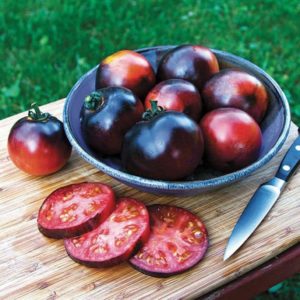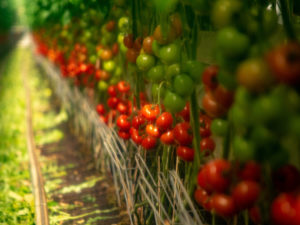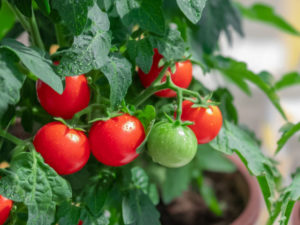Summer is here and you have a great crop of tomatoes, or you got a cheap deal at the farmers market. Preserve that summer freshness by home canning your beautiful ripe tomatoes.
You will feel so good when you take down a jar that you personally can prepare your favorite spaghetti sauce or tomato sauce recipe when the summer is long gone.
You will need to prepare your quart 32oz jars. It is recommended to use wide-mouth jars. Check your jars for any cracks and new lids to make sure the seals are not scratched and uniform.
Wash jars and lids in hot soapy water, and rinse well. Place the lids and metal bands in hot water but don’t boil them. Place the jars in hot water as they need to be filled while hot. Have a large pot of boiled water ready for your hot water preservation. For each quart jar, you will need 2 ½ -3 ½ pounds of fresh ripe tomatoes.

Canning Tomatoes for Beginners
To prepare food for canning you need to wash, clean, pare and cut up food just like if you were intending to use it for cooking and eating without canning.
You can peel off the skins by either blanching the tomatoes in a hot water bath for 30-60 seconds or until the skins start to crack and immediately put the hot tomatoes into a bowl of very cold water, or you can do the same by putting the tomatoes in an oven.
Cut the tomatoes in half after coring them and place them skin up on a paper-lined tray for three to five minutes.
Let them cool and peel them.
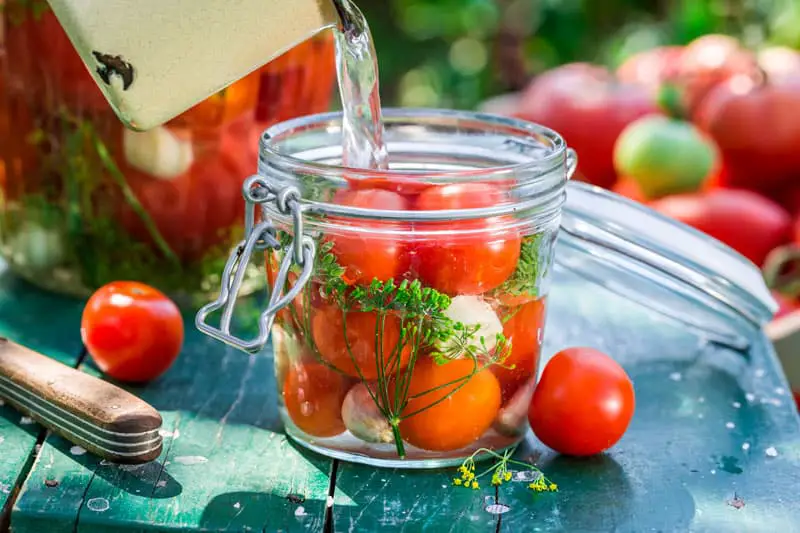 You can pack the tomatoes into the jars whole, halved, or quartered. Pack the tomatoes in an empty hot jar that you prepared adding 2 tablespoons of lemon juice or ½ teaspoon citric acid to each quart jar and one teaspoon of pickling or kosher salt to each jar.
You can pack the tomatoes into the jars whole, halved, or quartered. Pack the tomatoes in an empty hot jar that you prepared adding 2 tablespoons of lemon juice or ½ teaspoon citric acid to each quart jar and one teaspoon of pickling or kosher salt to each jar.
Carefully ladle tomatoes into hot jars leaving ½ inch headspace for each jar. Fill the jar with boiling hot water and remove any bubbles.
There should be ½ inch headspace. Wipe the rim of the jar clean with a towel. Take the lid out of hot water and place it carefully on top of the jar and then secure the band that has also been removed from the hot water. Fill your big pot with the boiling water with the packed jars.
It is helpful to have a wire or silicone basket in the hot water to help with the removal of the jars from the hot water bath. Make sure the jars are covered with at least 2 inches of water. Place lid on the pot and bring to a gentle boil for 45 minutes, if using pint jars process for 40 minutes.
Compensate for altitude if necessary. Shut off the heat; let everything sit for 5 minutes. Gently place the jars on a towel-lined counter where they will not be disturbed for 12-24 hours as they cool to room temperature.
The vacuum seal is formed during the cooling process.
Make sure to label and date your jars clearly. Check lids for the seal before storing. The lids should not click up or down when pressed.
Remove lids to check the seal. If a lid does not seal within 24 hours, reprocess or refrigerate. Store properly sealed jars in a cool dark place for up to a year.
Tomato Types for Canning
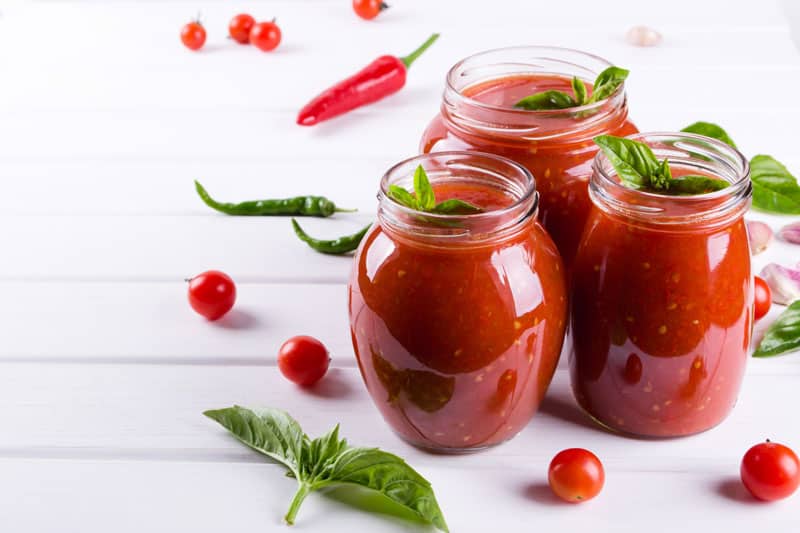 If you are making tomatoes sauce in bulk or your own tomatoes paste, Roma tomatoes are your best bet. The best Roma tomatoes are San Marzano, they are sweet, dense-fleshed and small-seeded. They are an Italian favorite.
If you are making tomatoes sauce in bulk or your own tomatoes paste, Roma tomatoes are your best bet. The best Roma tomatoes are San Marzano, they are sweet, dense-fleshed and small-seeded. They are an Italian favorite.
Why peal the tomatoes?
Tomatoes skins can be bitter and tough. Some people use ice water to help cool tomatoes during the skinning process and that helps.
Why do you need to add lemon juice to canned tomatoes?
Tomatoes need a lower pH value so that they can be water bath processed. Citric acid naturally lowers the pH without changing the flavor of the tomatoes and can be a substitute.
Use ½ teaspoon citric acid per quart of tomatoes. For pints use a ¼ teaspoon. Citric acid can also be substituted in your favorite Salsa recipe that calls for lemon juice, but because of its low pH generally all canned tomatoes products use either lemon juice or citric acid.
A great homemade canned soup recipe is on the Diy Natural site, under “A Homemade Tomato Soup Recipe Made for Canning.”
The tricky thing about canning tomato soup, according to Sarah Ozimek is that many recipes call for cream or flour which does not do well with water bath canning. You also have to make sure the pH level of the soup will be high enough to make it stable for a shelf life of a year.
The National Center for Home Food Preservation advises that you use no more than 3 cups of vegetables for each 22pounds of tomatoes. If you add too many veggies you inadvertently dilute the natural acid from the tomatoes.
The best tomatoes for soup are again those used in tomato paste because they are fleshier, sweet, and less watery. You need to add some lemon juice or citric acid to the soup, the citric acid seems to affect the tasteless, but again it is a matter of personal taste. Your canned soup may be thicker than you are used to so you can water it down with water or cream or milk, once you reheat your canned soup. If you don’t want to use dairy milk, you can substitute it for coconut milk.
So when you see all those tomatoes, especially the plum shaped ones, be like a squirrel and store them up by canning them while they are fresh so you can have that summer goodness all year round. There is something very satisfying about a kitchen pantry with jars of homemade canned goods, especially tomatoes bursting with flavor.

